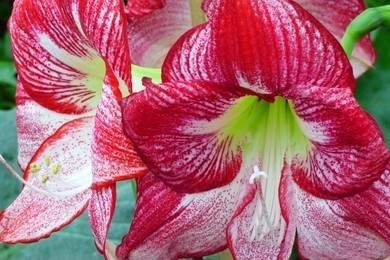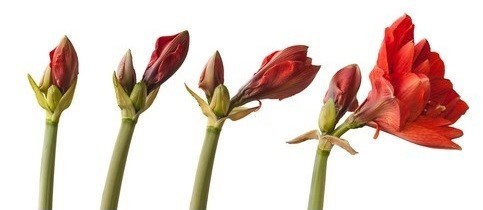Hippeastrum Plant Tissue Culture
 Large flowering Hippeastrum
Large flowering Hippeastrum
Our tissue culture technology service is an effective way
to propagate Hippeastrum plants in large quantities.
Hippeastrum plant belongs to the Amaryllidaceae family, is a perennial herbaceous plant, native to tropical America, is the world-famous bulbous flower. There are about 70 species of Hippeastrum, and its wild species are mainly distributed in the tropical and subtropical regions of Central and South America. Through hybridization and selection by horticulturists around the world, a group of hybrid varieties has been formed, including more than 600 hybrids (including varieties), of which about 100 are popular horticultural cultivars.
The genus has large and colorful flowers, bright leaves, and winter-blooming characteristics, which can be cultivated for open-field garden applications, but also as important potted and cut flowers, often used for holiday decorations, with high ornamental value. Different varieties of Hippeastrum plants differ greatly in scape length, single flower diameter, flower shape, and other traits, so they can be developed according to their performance traits of different applications, with great economic potential.
Tissue culture service
The natural reproduction rate of Hippeastrum plant bulbs is very low, while the reproduction rate of tissue culture is relatively high, thus the industry of plant tissue culture fast propagation is developing rapidly. Lifeasible provides tissue culture seedlings with the advantages of fast propagation, good seedling quality, and simultaneous detoxification, which can be well used in the production of Hippeastrum plants.
In the tissue culture of Hippeastrum plants, we mostly use bulbs or bulb discs, ovaries or pedicels (including young budding fruits, young flower stems, and young embryos), and hypocotyls as the starting materials, and then culture them to obtain guaiac tissue, adventitious buds or somatic embryos, and then culture them to obtain complete plants.

Besides, in the inflorescence of Hippeastrum plants, the biomass of petals occupies a large proportion, especially in heavy-flowered species, where up to 20 or more petals account for more than 70% of the total fresh weight of flower buds, so we also use petals as explants for tissue culture.
The Hippeastrum plant tissue culture in which we apply the most is 1/2 MS medium, MS medium, and LS medium. The ratio of cytokinin and growth factors also plays a crucial role in the induction of adventitious shoots in Hippeastrum plants. We have a professional regulation system for all these influencing factors.
Hippeastrum plants are obtained by sowing and propagating new varieties because it takes at least 3 years from sowing to flowering, so it is difficult to adapt to large-scale production and market demand. The artificially divided scale cuttings for the propagation of sub spheres are susceptible to seasonal restrictions and are not conducive to higher reproduction rates, so they are not our best choice either. Although the relative cost of tissue culture fast propagation is high, the propagation efficiency, stable traits, short seedling time, is the way to Hippeastrum plant factory production and the expansion of new varieties.
You want to sign a confidentiality agreement.
You have a specific plant species for your experimental needs.
You have a reliable and relevant cooperation project to discuss.
You are very interested in our project or have any questions.
You need an updated and detailed quotation.
For research or industrial use.

 Large flowering Hippeastrum
Large flowering Hippeastrum

